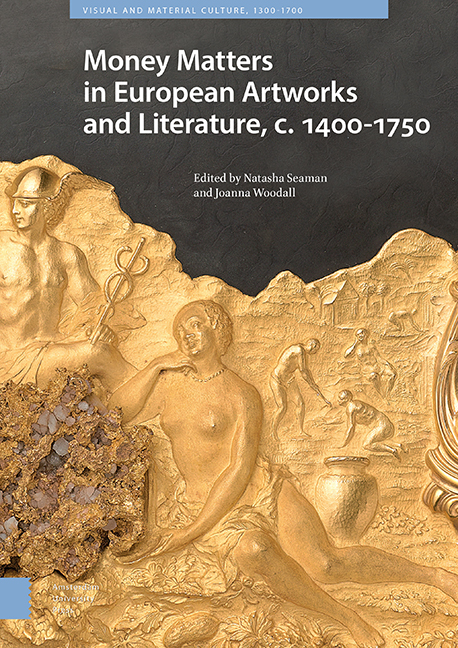2 - Scaling the World: Allegory of Coinage and Monetary Governance in the Dutch Republic
Published online by Cambridge University Press: 15 September 2022
Summary
Abstract
Attributed to Romeyn de Hooghe, Allegory of Coinage envisions the global horizons of Dutch monetary governance. The central female personification, Moneta of Holland, receives tributaries from Africa, America, and Asia. Bearing sacks of silver and gold, these male laborers appear within a hybrid landscape that visually relates the technologies for mining and refining precious metals to the crafts of minting and assaying specie. Likely made to decorate the offices of the Masters-General of the Mints, who supervised mints in the Dutch Republic, Allegory of Coinage encouraged these officials to perceive how their governance of the material production of coins was embedded in a global division of labour for sourcing and distributing precious metals.
Keywords: money, Romeyn de Hooghe, Netherlands, labour, global history
In a document dating to 1785, Marcellus Emants, the assayer-general of the Dutch Republic, reports a payment made to the painter Aert Schouman (1710-1792), then headmaster of the Dordrecht Guild of St. Luke, “for repairing a chimney piece which hangs in the muntkamer, depicting all activities related to the making of coins.” Emants's statement may describe a painting, now known as the Allegory of Coinage, which the Royal Mint in Utrecht gave to the Rijksmuseum in 1884 (fig. 2.1). Tentatively attributed to Romeyn de Hooghe (1645-1708), this large painting situates an abstruse allegory within a synoptic view of mining, refining, and minting precious metal. Although little is known about the production context of this painting, Emants's remarks suggest that Allegory of Coinage was made for the Councillors and Masters-General of the Mints of the Dutch Republic (Raden en Generaalmeesters van de Munten der Vereenigde Nederlanden) and that it hung above the fireplace in their offices, the muntkamer, in The Hague, close to other key governmental bodies of the Dutch Republic. (To distinguish between the room and the governmental body who used it, we henceforth use ‘mint council’ to designate the officials and ‘muntkamer’ for their headquarters.)
Allegory of Coinage presents a visual discourse on Dutch monetary governance. It portrays the Maiden of Holland as Moneta, the goddess of money. Signifying the mint council's oversight, this figure presides over various tributaries, who signify the global flow of bullion.
- Type
- Chapter
- Information
- Publisher: Amsterdam University PressPrint publication year: 2022



